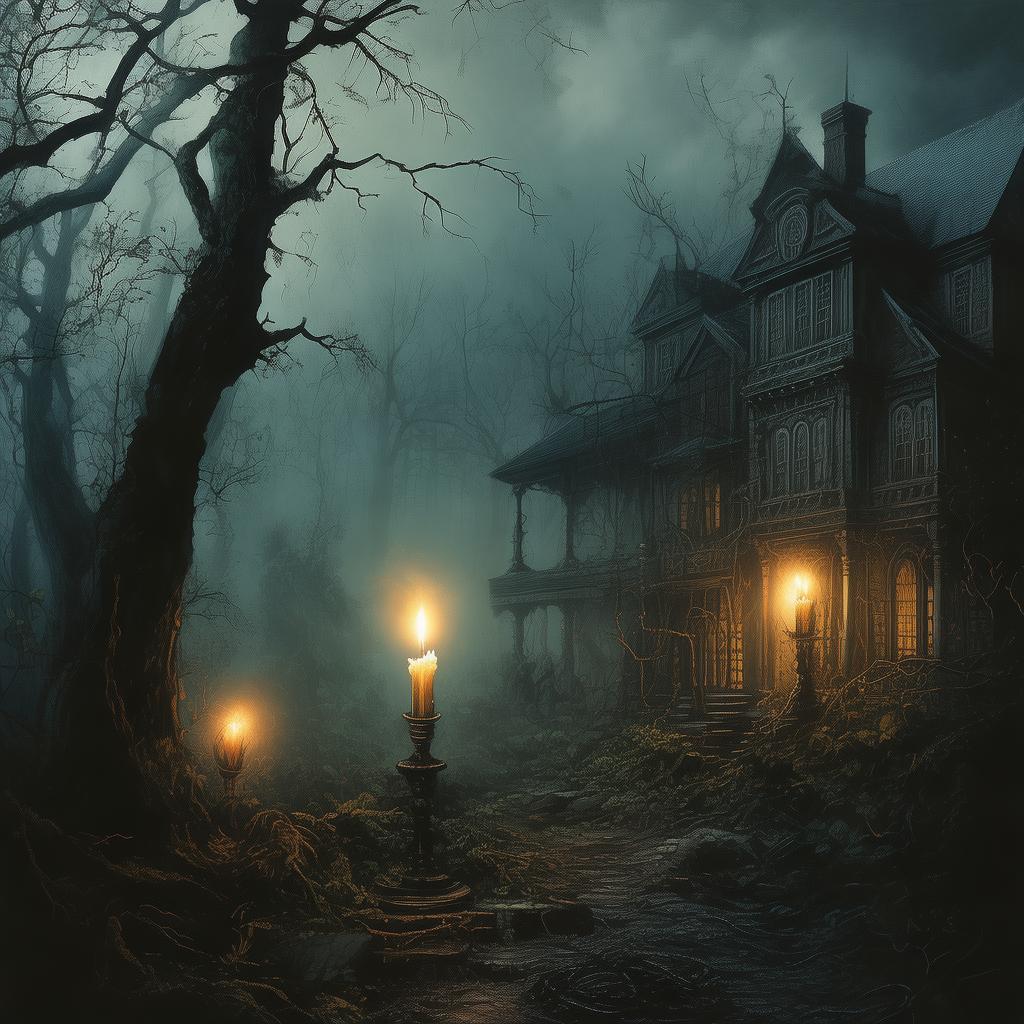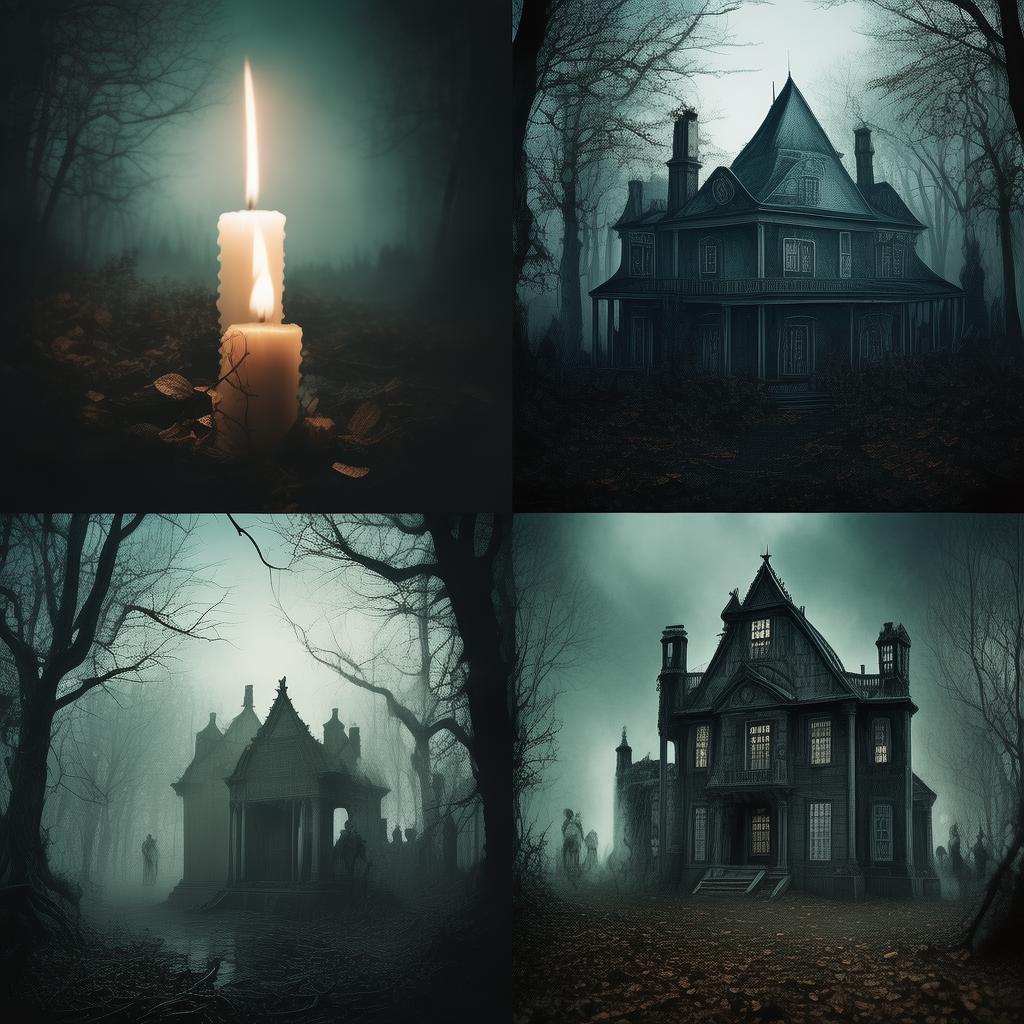The Haunting Canvas: The Curator's Reckoning
In the heart of an old, ivy-clad mansion on the outskirts of town, nestled between whispering willows and a silent river, stood the unassuming Curatorial Arts Society. It was here that the enigmatic curator, Eliza Whitmore, had recently opened a new exhibition titled "The Ghostly Gallery: A Salute to the Haunted Art." The gallery was as much a whisper as it was a spectacle, an enigma that drew in curious onlookers and the uninitiated alike.
Eliza was known for her meticulous attention to detail and her passion for the obscure. She had spent years researching the intersection of the supernatural and art history, her eyes wide with wonder at the possibility of capturing the ethereal in the physical world. But tonight, as the final touches were being put on the new show, Eliza's excitement was tinged with a strange unease.
The gallery was a labyrinth of dark hallways and shadowy corners, each room housing a piece of art with a story of its own. There were portraits that seemed to follow the eyes of the viewer, landscapes that shifted with the changing light, and sculptures that moved as if in response to the air. It was the kind of place that made one's heart skip a beat and their breath catch in their throat.
Eliza's assistant, James, was a young man with a penchant for the macabre, his eyes gleaming with curiosity as he watched the curator navigate the rooms. "Do you think they're real, Eliza?" he whispered, his voice barely above a murmur.
Eliza paused, her fingers tracing the frame of a portrait that seemed to glow with an inner light. "I don't know, James. But I know they're not ordinary. There's something... haunting about them."
As the gallery doors swung open to the public, the air was thick with anticipation. The first visitor, a middle-aged woman with a penchant for the bizarre, gasped as she approached the gallery's centerpiece: a painting of a woman in white, her eyes wide with terror, her hands reaching out as if to grasp something unseen.
Eliza watched with a mix of awe and trepidation as the woman approached the painting. She felt a strange pull, as if the painting was calling to her. The woman's eyes met Eliza's, and in that instant, a sense of dread washed over the curator.
The next day, the whispers began. Visitors spoke of feeling cold drafts where there were none, of hearing soft, ghostly whispers, and of seeing the portraits shift as if the subjects were alive. Eliza was a woman of science, of logic, but even she couldn't ignore the strange occurrences.
It was during one of these visits that Eliza encountered the most extraordinary artifact of all: a small, ornate box. The box was intricately carved with symbols that seemed to move as if they were alive, and when Eliza's fingers brushed against it, she felt a surge of energy, as if she were touching something deeply personal.
As the days passed, Eliza became more and more obsessed with the box. She felt a strange connection to it, as if it were a key to something hidden. She began to delve deeper into her research, searching for clues about the box's origins and the meaning behind the symbols.
It was then that she discovered a hidden journal, hidden behind a false wall in her office. The journal belonged to a previous curator, one who had vanished under mysterious circumstances. The entries were filled with strange tales of hauntings and eerie occurrences, all linked to the "Ghostly Gallery."
Eliza's mind raced as she read. The journal spoke of an ancient, forbidden collection of art, art that was said to hold the power to bind the living to the dead. The curator had been obsessed with this collection, believing it to be a means to achieve eternal life. But at what cost?
As Eliza delved deeper, she realized that her own life was intertwined with the haunting art. She discovered that her great-grandmother had been the last person to possess the box, and that it was she who had been responsible for the strange occurrences at the gallery. It was her own ancestors who had bound themselves to the art, seeking to prolong their existence at the expense of the living.
With the journal in hand, Eliza found herself at the center of a supernatural storm. The gallery's portraits began to change, their eyes locking onto her, as if she were the one they had been waiting for. The air grew thick with tension, and the whispers grew louder, more insistent.
In a moment of desperate clarity, Eliza realized that she must break the curse. She had to free her ancestors from their bindings, no matter the cost. She turned to the box, her fingers trembling as she reached out to touch it.
With a deep breath, Eliza opened the box, and the room was immediately filled with a blinding light. When the light faded, the gallery was empty, save for Eliza, who stood in the center of the room, the box in her hand.
The curse was broken, but Eliza's life would never be the same. The haunting art had revealed to her the truth about her lineage and the lengths they had gone to achieve immortality. It was a revelation that would change her forever.

As she stepped out of the gallery, the cold air hit her like a physical blow. The gallery was gone, and with it, the haunting art. Eliza felt a sense of loss, but also a strange sense of relief. She had uncovered the truth, and in doing so, she had freed herself from the shadow of her ancestors.
The Curatorial Arts Society would never be the same, and neither would Eliza Whitmore. She had seen the dark side of the supernatural, and it had left its mark. But she had also found a way to move forward, with the knowledge that even the most haunting of art could be put to rest.
Eliza walked away from the mansion, the whispering willows and silent river offering a stark contrast to the eerie occurrences within its walls. The "Ghostly Gallery" had been a mirror to her own soul, revealing truths she had long forgotten. And as she disappeared into the distance, the only sound was the rustling of leaves and the distant call of a solitary owl.
In the end, the haunting art had not only brought Eliza to the brink of madness but had also brought her to the edge of her own identity. It was a reckoning, a confrontation with the past that had reshaped her future. And in the quiet of the night, the only thing left was the ghostly echo of the gallery, a haunting reminder of what had been, and what might yet be.
✨ Original Statement ✨
All articles published on this website (including but not limited to text, images, videos, and other content) are original or authorized for reposting and are protected by relevant laws. Without the explicit written permission of this website, no individual or organization may copy, modify, repost, or use the content for commercial purposes.
If you need to quote or cooperate, please contact this site for authorization. We reserve the right to pursue legal responsibility for any unauthorized use.
Hereby declared.









